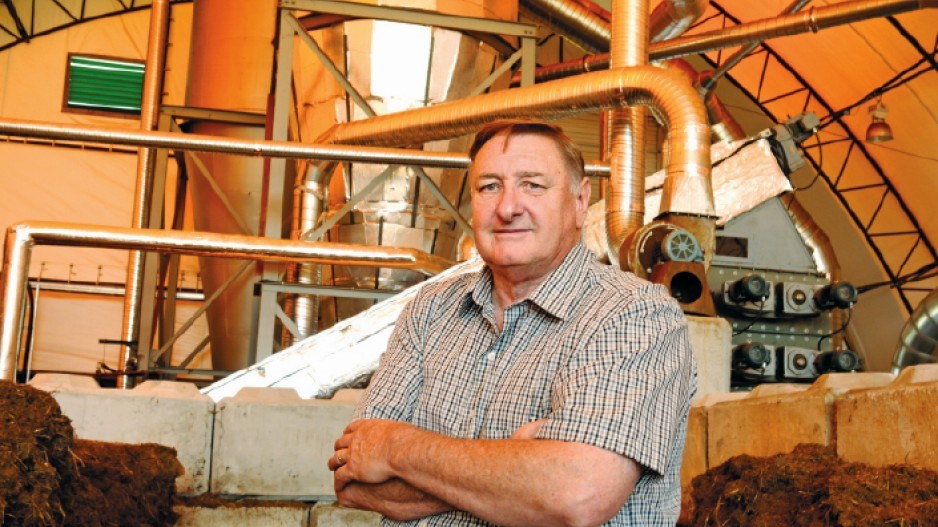There are roughly 10 million stabled horses in North America, and each one produces a tonne of waste a month, according to GreenScene Agritek Inc. founder Phil Wilford, who has developed a process for recycling that waste and turning it into energy.
While developing a process for treating chicken manure to address concerns about pathogens during the avian flu outbreak in 2005, Wilford learned that the real market for a manure treatment process was in stables.
Racetracks and stables typically use sawdust and shavings in their stalls. Some of the used bedding is used in fields as fertilizer, but its high lignin content means that using too much of it is not good for the soil. Many stable owners simply pile the stuff up and let it decompose.
“It was basically being piled on the back 40, hoping it would go away in the middle of the night,” Wilford said.
Wilford developed a thermal process that bakes the pathogens out of used bedding. The end product can be sold back to the stables for reuse.
Wilford's company has a pilot plant in Ladner that's now producing recycled horse bedding. But recently, his company received $146,600 in funding under the Canada-B.C. Agri-Innovation Program to develop a secondary product: fuel pellets.
Wilford is now working on a process that would compress the treated bedding into fuel pellets, which greenhouses could then burn for heat and power.
Because a processing plant would cost between $1.5 million and $2 million, it only makes economic sense to build it in a region with 1,500 to 2,000 horses where stable owners can form a consortium.
Burnaby-based Diacarbon Energy Inc. is also receiving Agri-Innovation Program funding to add farm waste to the stock from which it creates biochar – a kind of clean coal that can be used either as a fuel or for soil enhancement.
Diacarbon's pilot plant in Burnaby is already producing biochar from wood waste. With $142,575 from the Agri-Innovation Program, the company aims to develop a blended feedstock that includes chicken manure and waste from mushroom farming.
Animal manure has a high mineral content, so when it's turned into biochar, up to 60% of it becomes ash. That creates a problem of what to do with the ash byproduct. Wood waste produces only 2% to 3% ash, said Diacarbon founder and president Jerry Ericsson, so it makes a good blending material.
Currently, farm waste in North America is being composted, landfilled and used as fertilizer.
“The problem is we're putting more on the fields than we should be,” Ericsson said. “There gets to be problems with water issues. This is – we think – a better way of dealing with that waste stream. What we're doing with this grant is blending wood and other materials to create high-quality fuels.”
The U.S. Department of Agriculture estimates that more than 335 million tonnes of manure is produced annually on farms in the U.S. – about one-third of America's total municipal and industrial waste output. A single dairy farm with 2,500 cows produces a volume of waste equivalent to a city with a population of 411,000. •




